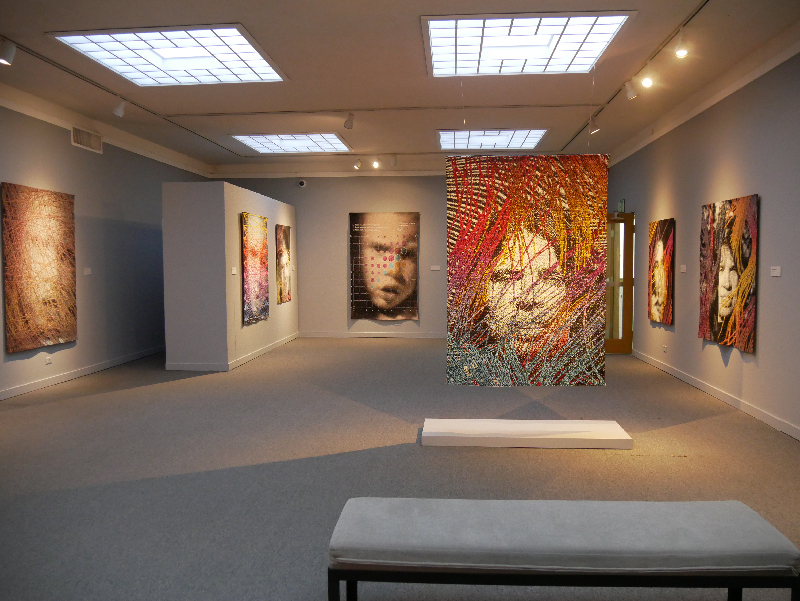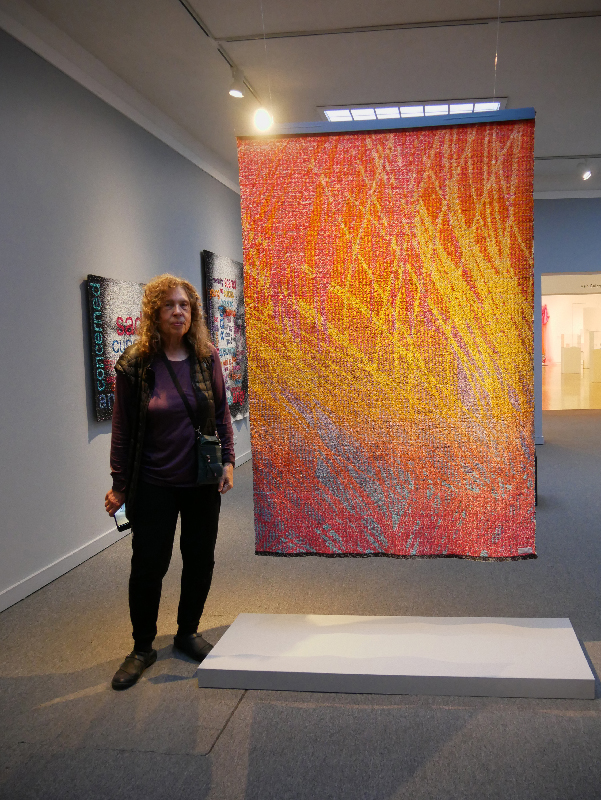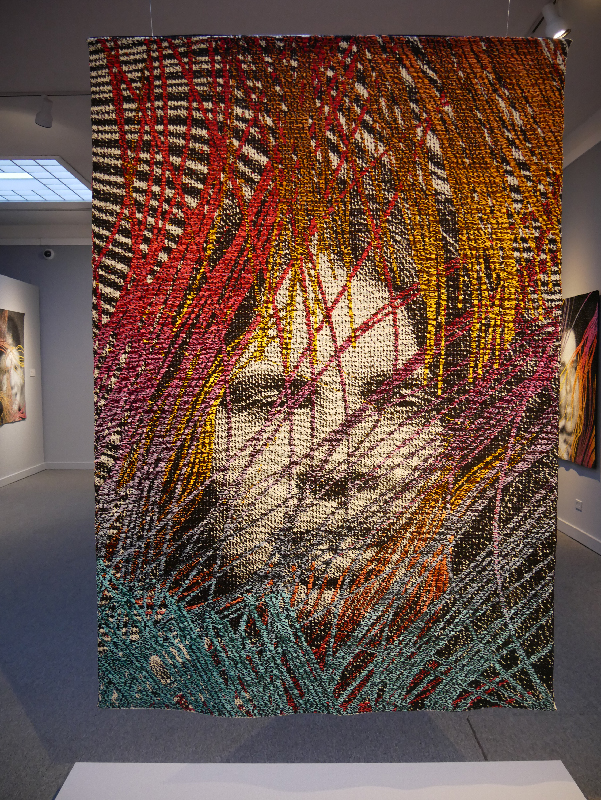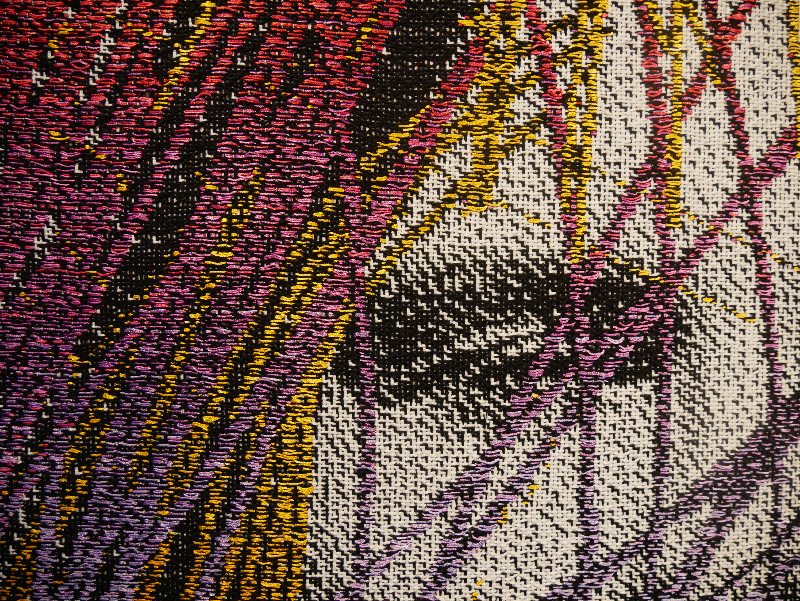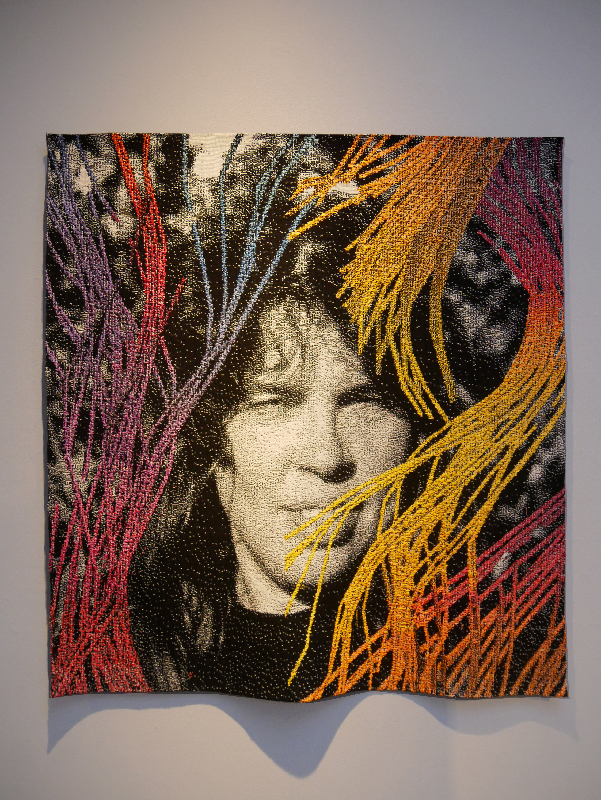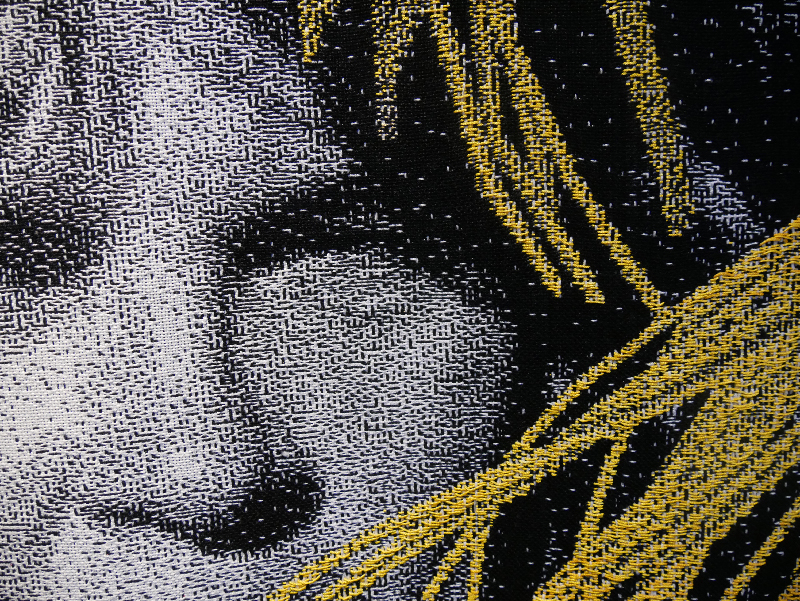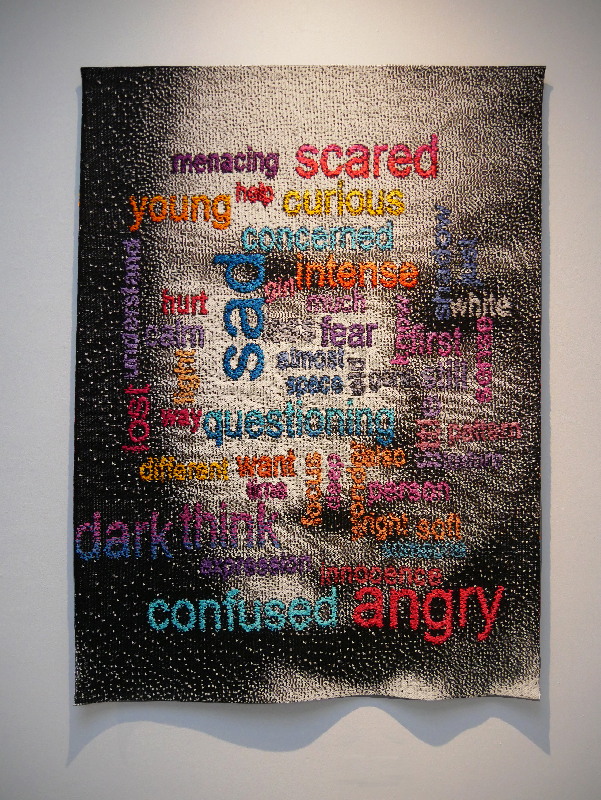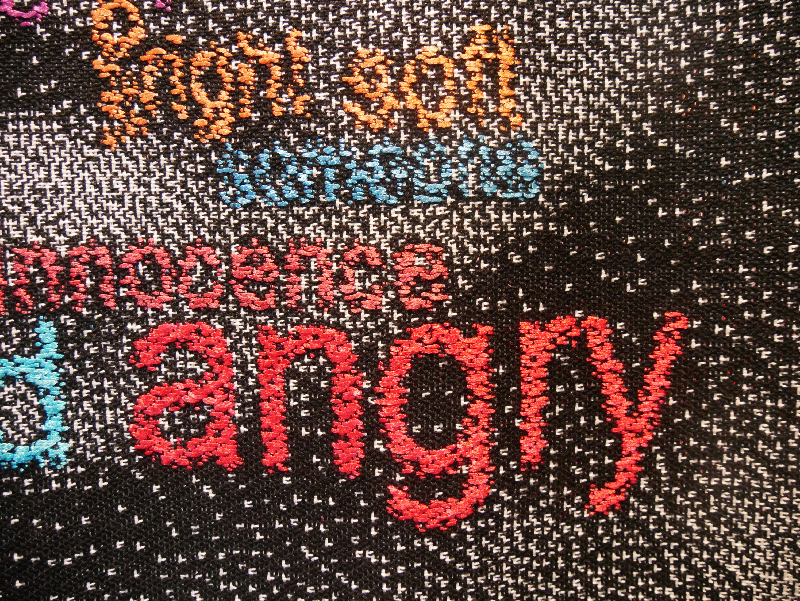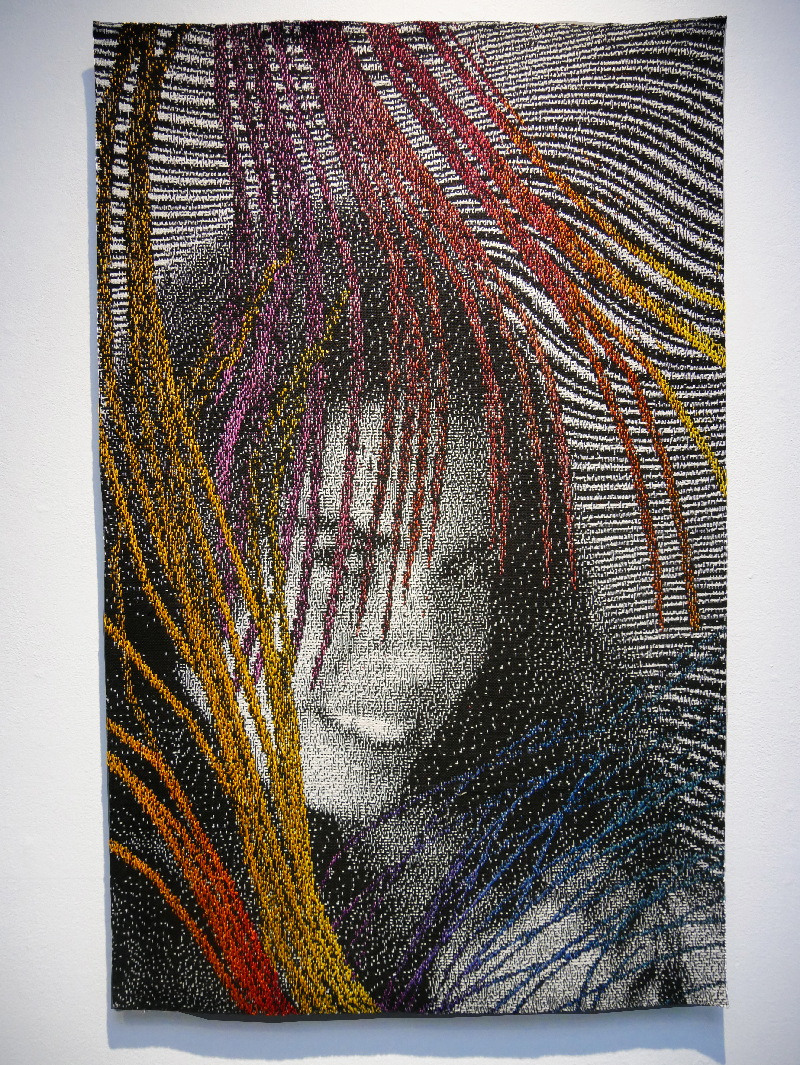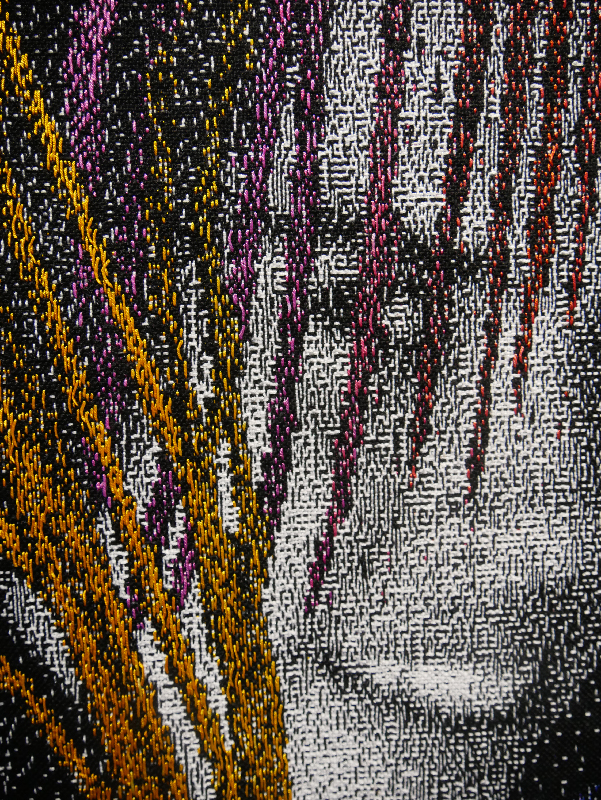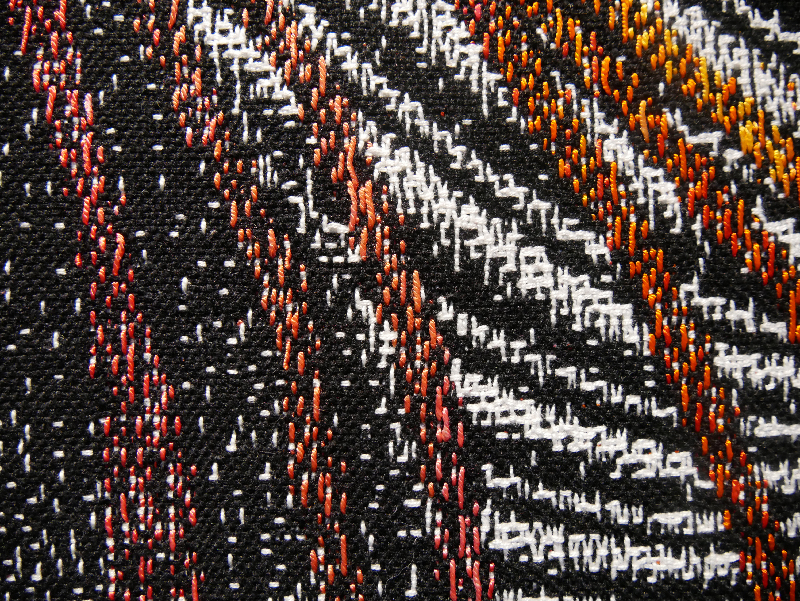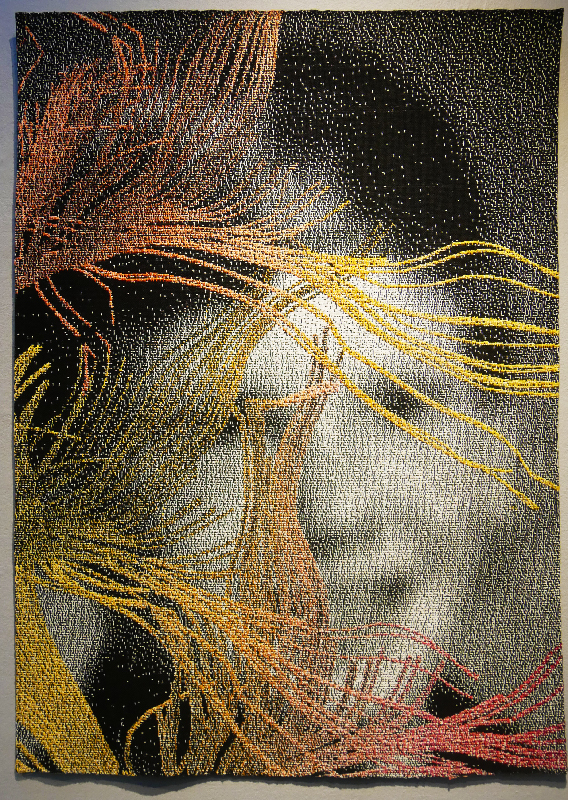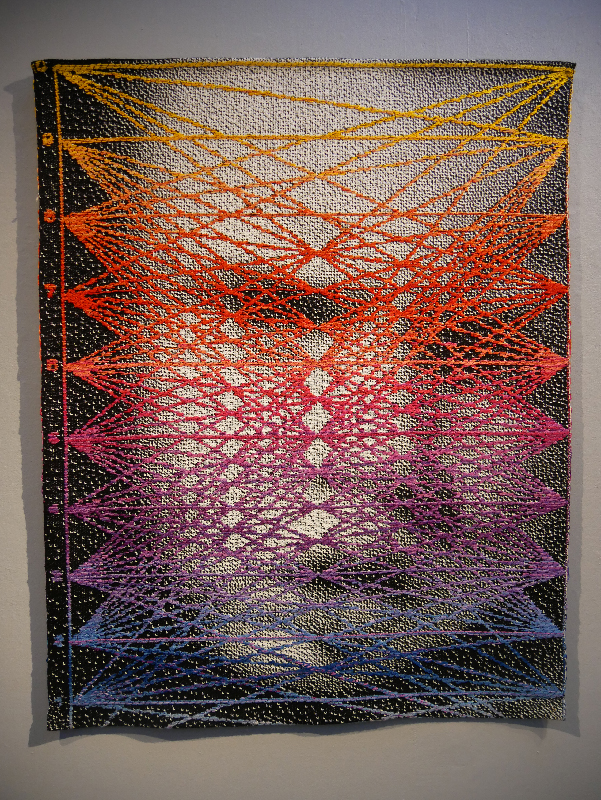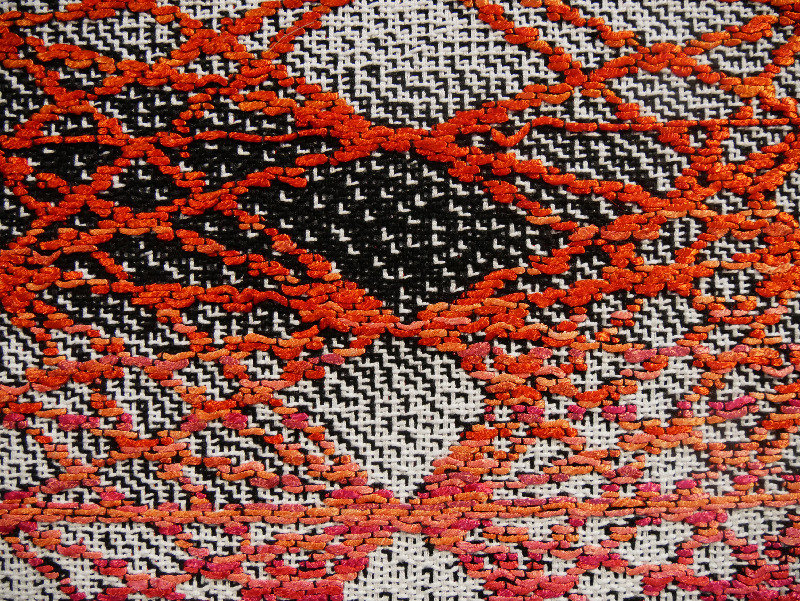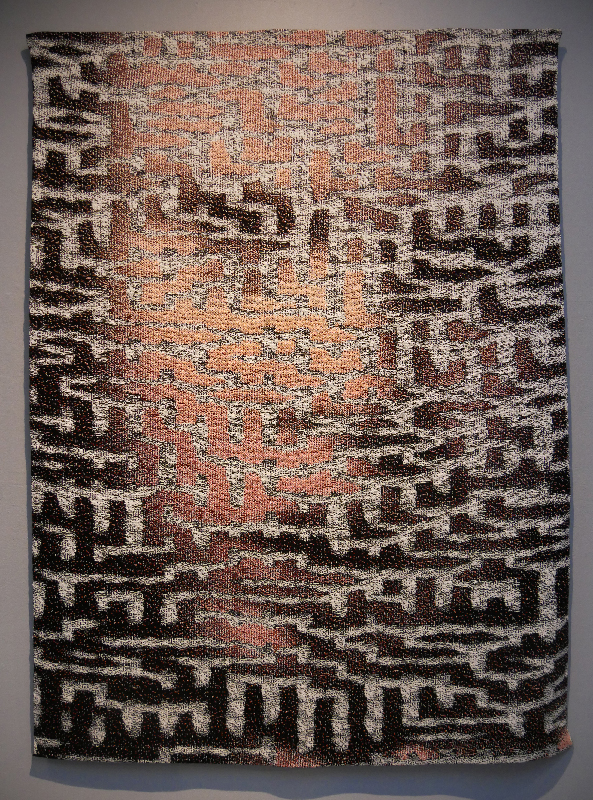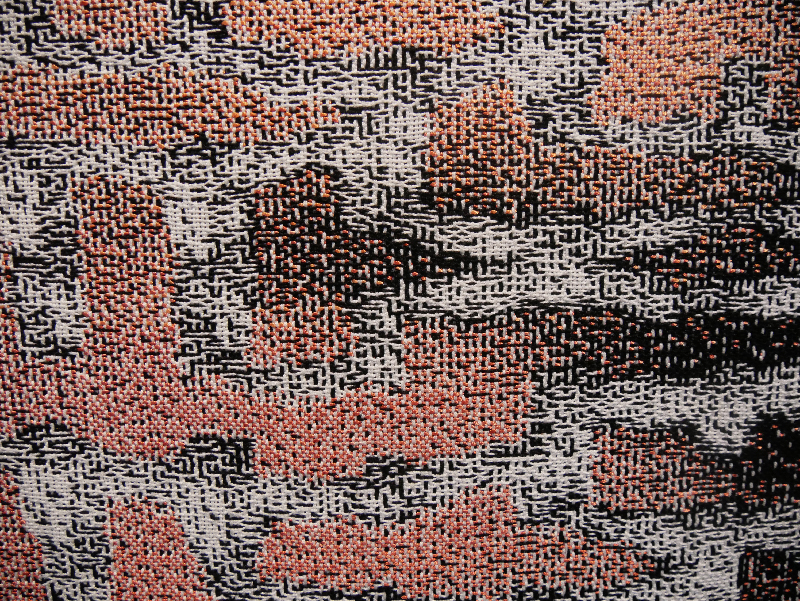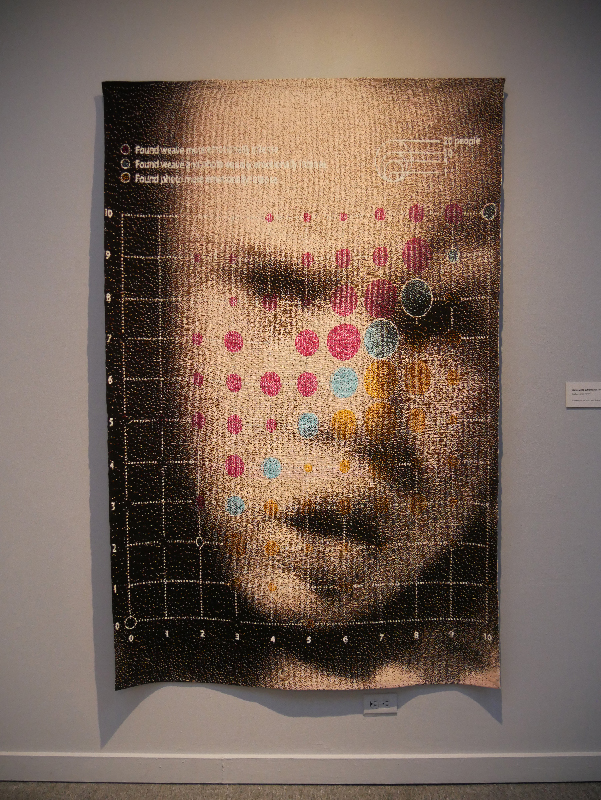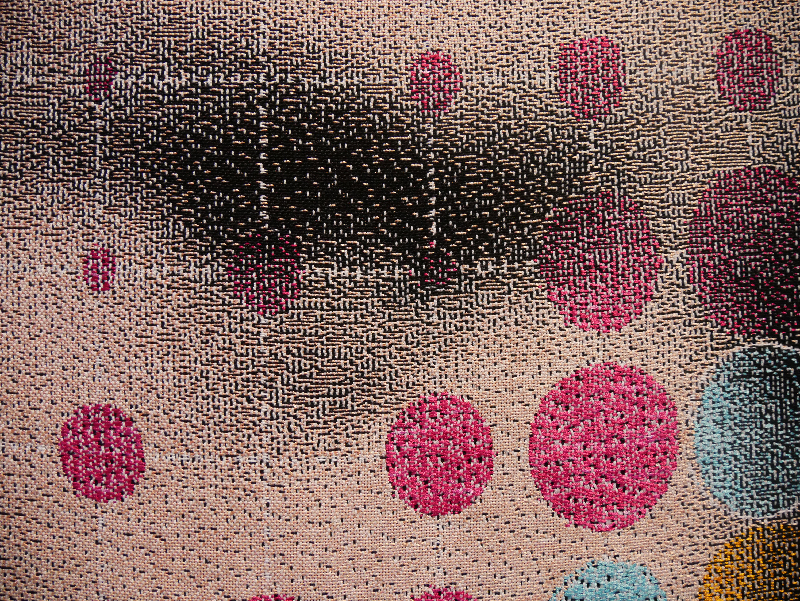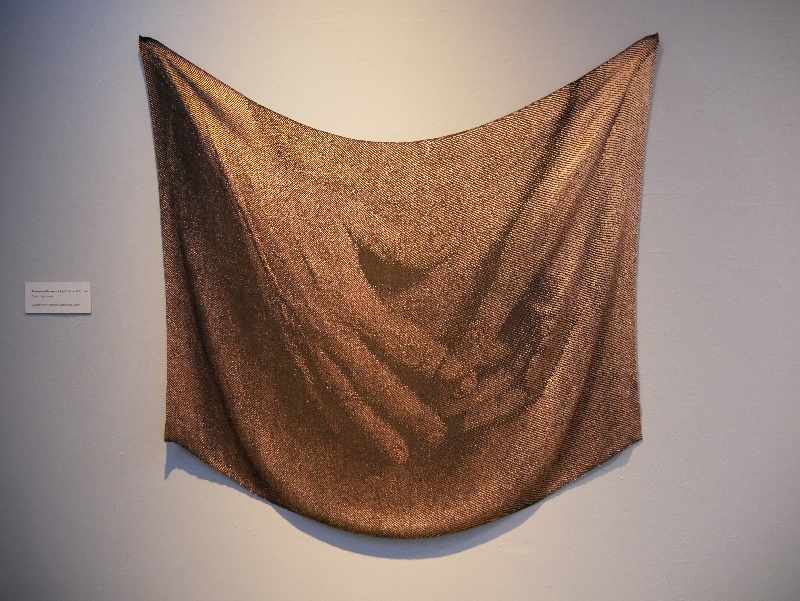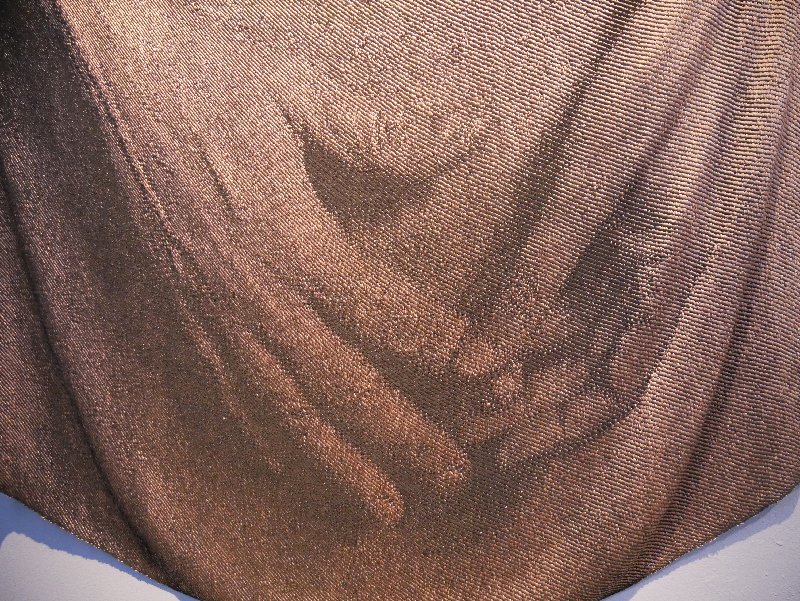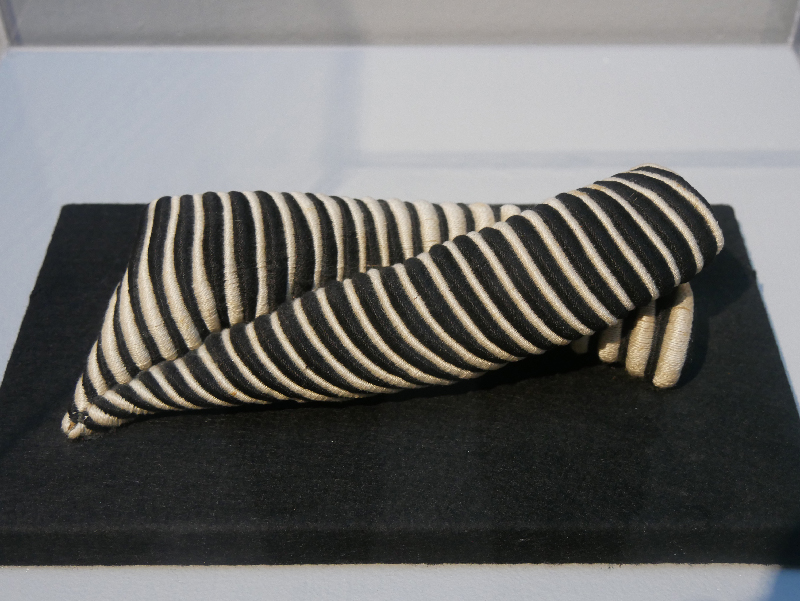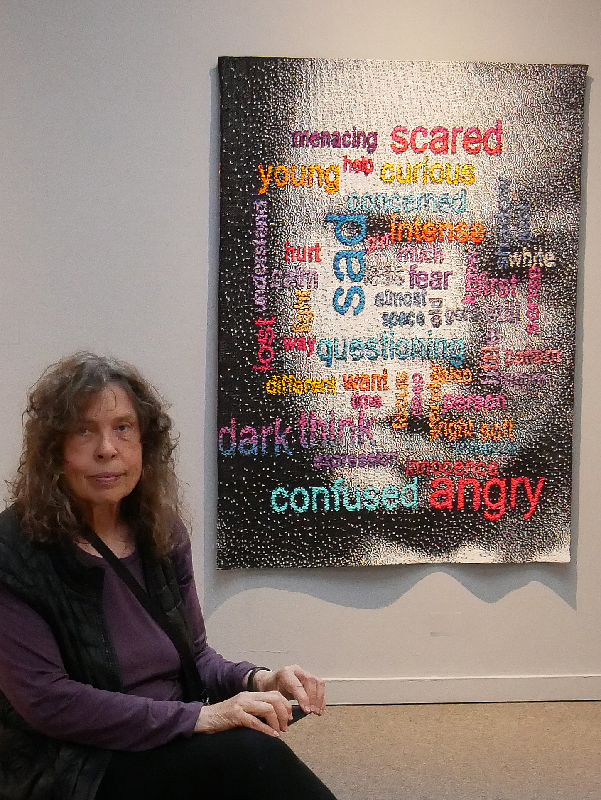View at the Lia Cook exhibition “Inner Traces” at the Richmond Art center. Free hanging “Mindmeld”, 2016 Lia Cook´s Ausstellung, “Inner Traces” fand vom 11. September bis 16. November 2018 im Richmond Art Center in Richmond, California statt. Diesen text gibt es nur auf englisch.
Lia Cook in the exhibition with “Mindmeld”, backside, 2016 ; cotton, rayon, woven; photo Beatrijs Sterk Lia Cook,USA:”Mindmeild”, 2016; cotton, rayon, woven; photo Beatrijs Sterk Lia Cook,USA:”Mindmeild”, 2016, detail ; cotton, rayon, woven; photo Beatrijs Sterk Lia Cook, USA : “Neurothread Head”, 2017; cotton, rayon, woven; photo Beatrijs Sterk Lia Cook, USA : “Neurothread Head”, 2017, detail ; cotton, rayon, woven; photo Beatrijs Sterk Lia Cook,USA: “Intense & Questioning”, 2018; cotton, rayon, woven; photo Beatrijs Sterk Lia Cook,USA: “Intense & Questioning”, 2018, detail; cotton, rayon, woven; photo Beatrijs Sterk Lia Cook,USA: “Revisioned”, 2018; cotton, rayon, woven; photo Beatrijs Sterk Lia Cook,USA: “Revisioned”, 2018, detail ; cotton, rayon, woven; photo Beatrijs Sterk Lia Cook,USA: “Revisioned”, 2018, detail ; cotton, rayon, woven; photo Beatrijs Sterk Lia Cook, USA: “Timothy”, 2015; cotton, rayon , woven. The picture actually shows Dr Timothy Ellmore, Associate Professor, City College of New York, CUNY Lia Cook, USA: “positivity Su Data”, 2014; cotton, rayon, woven; photo Beatrijs Sterk Lia Cook, USA: “positivity Su Data”, 2014,detail ; cotton, rayon, woven; photo Beatrijs Sterk Lia Cook, USA : “Maze Gaze”, 2007; cotton, rayon, woven; photo Beatrijs Sterk Lia Cook, USA : “Maze Gaze”,detail, 2007; cotton, rayon, woven; photo Beatrijs Sterk Lia Cook,USA: “Data Dots Emotional Intensity”, 2015; cotton, rayon, woven; photo Beatrijs Sterk Lia Cook,USA: “Data Dots Emotional Intensity”, 2015, detail ; cotton, rayon, woven; photo Beatrijs Sterk Lia Cook,USA: “Presence/Absence Light Touch II” 1998; cotton, rayon, woven; photo Beatrijs Sterk Lia Cook,USA: “Presence/Absence Light Touch II” 1998, detail; cotton, rayon, woven; photo Beatrijs Sterk Lia Cook,USA: “Legs”, 1977; cotton, polyurethane, woven; photo Beatrijs Sterk Lia Cook with “Intense and Questioning”, 2018; cotton, rayon, woven; photo Beatrijs Sterk
